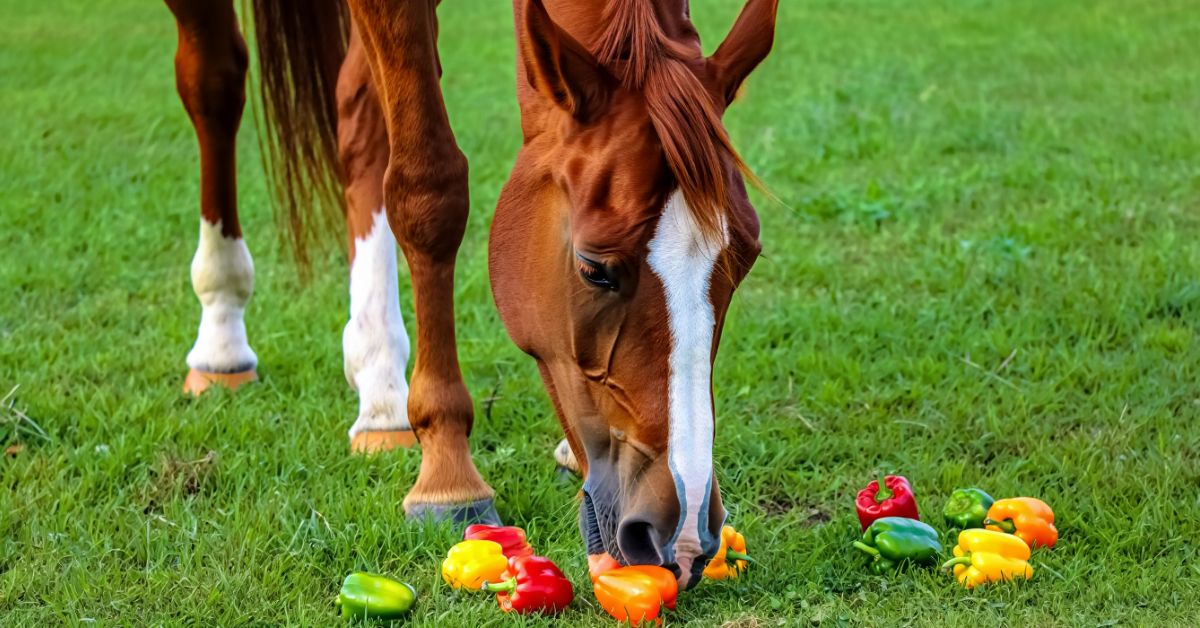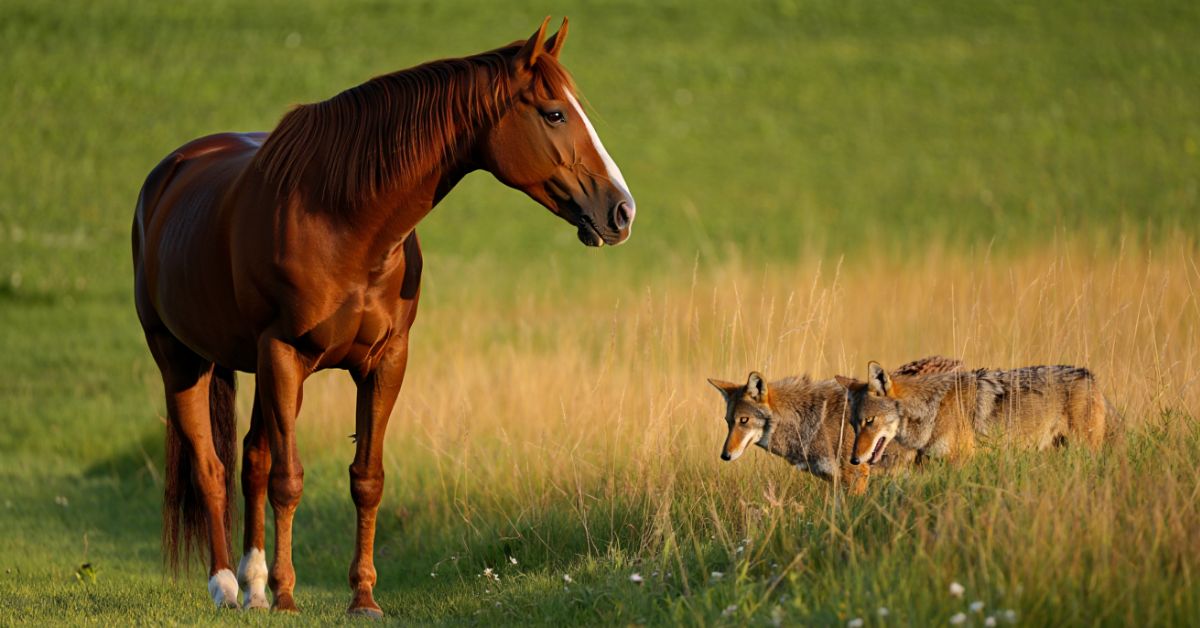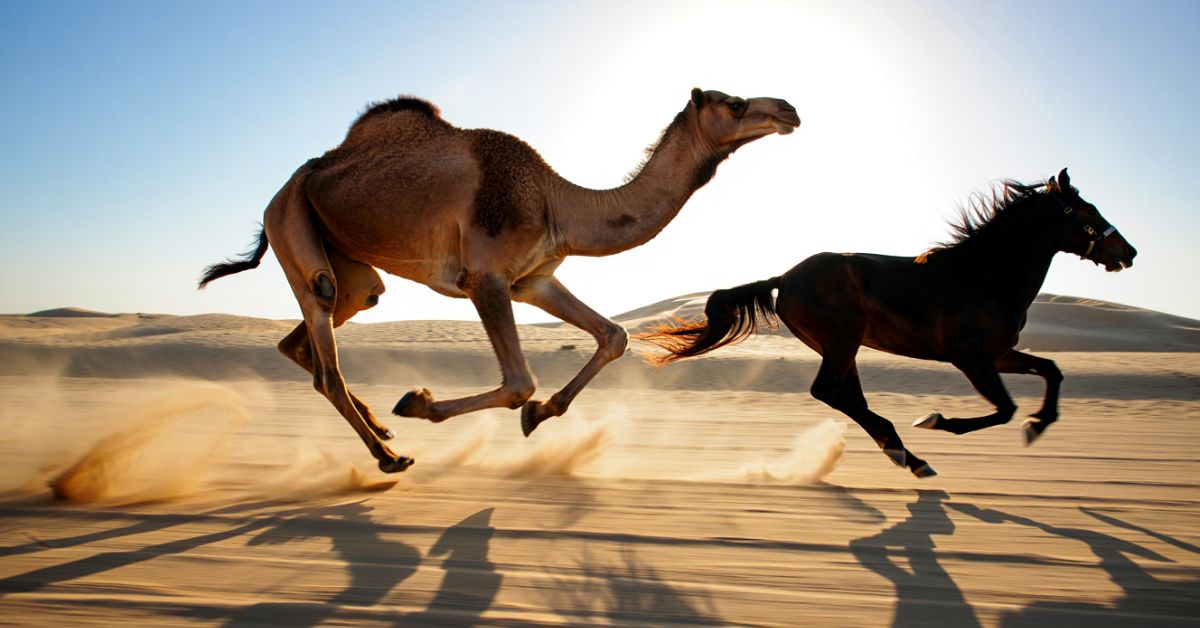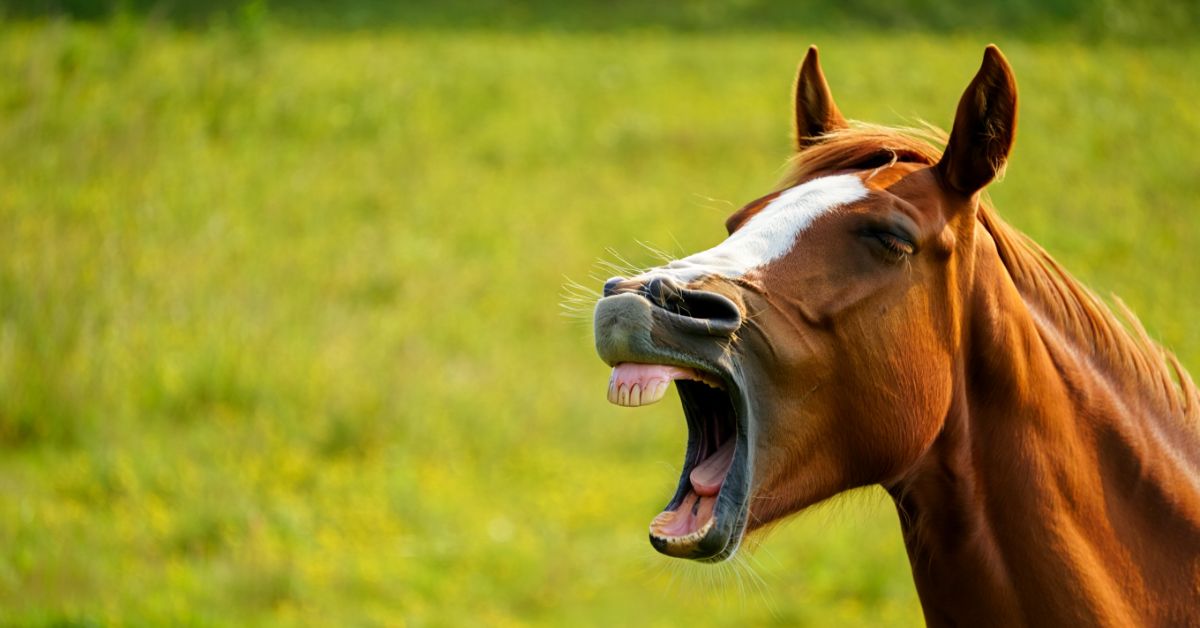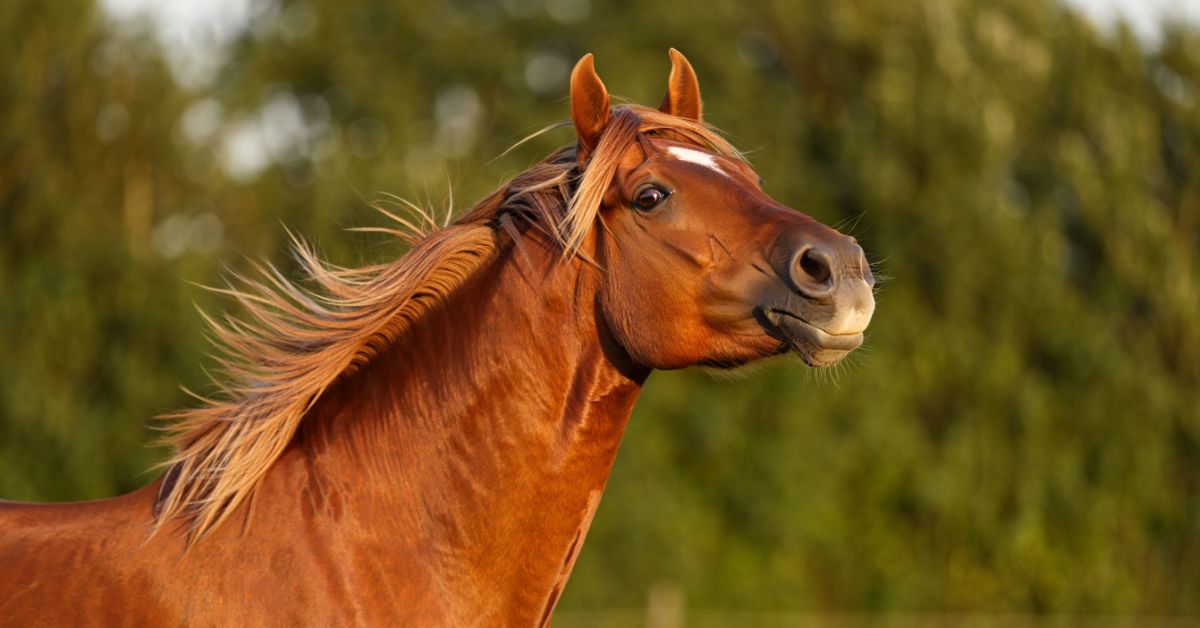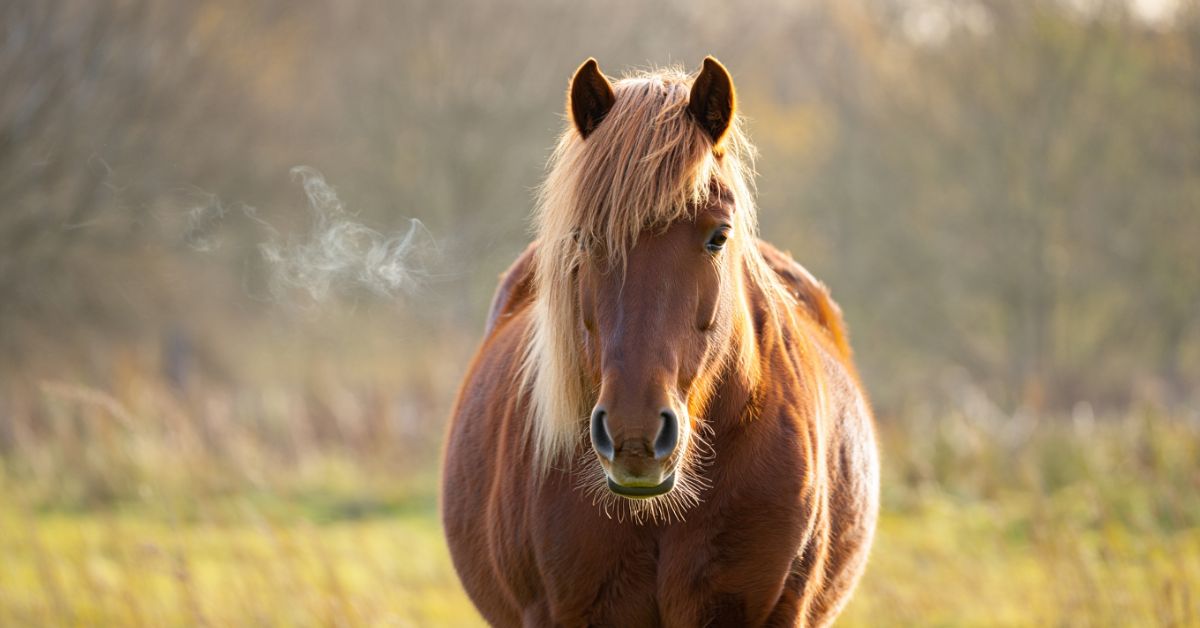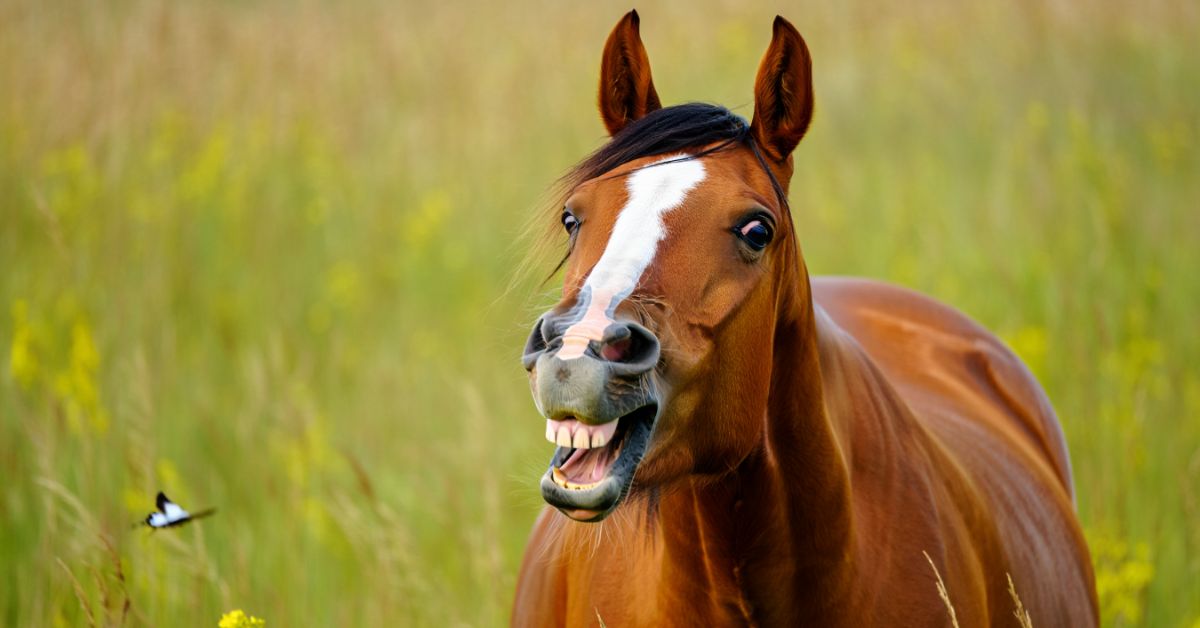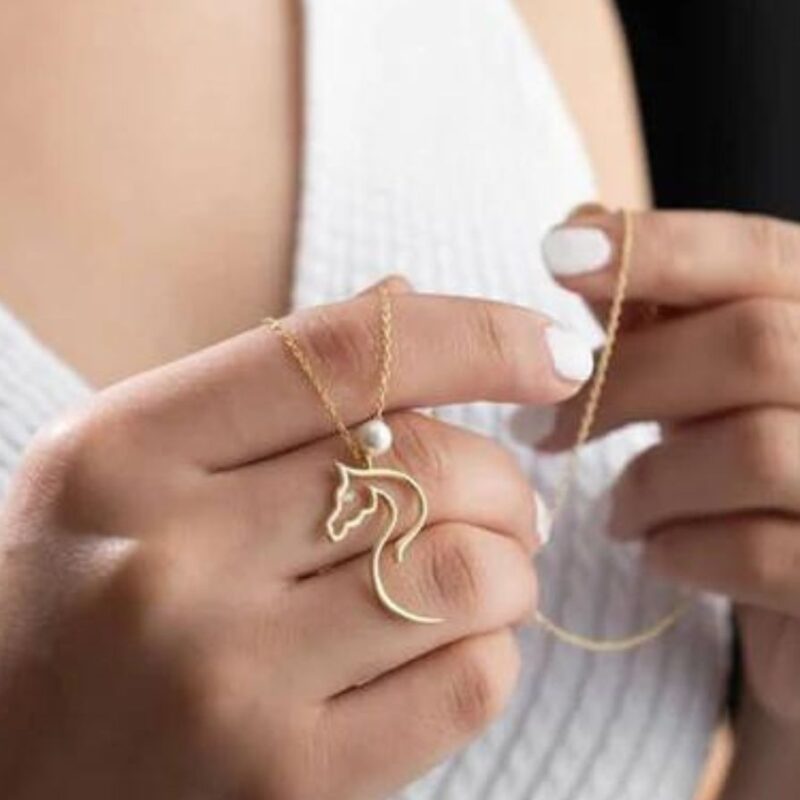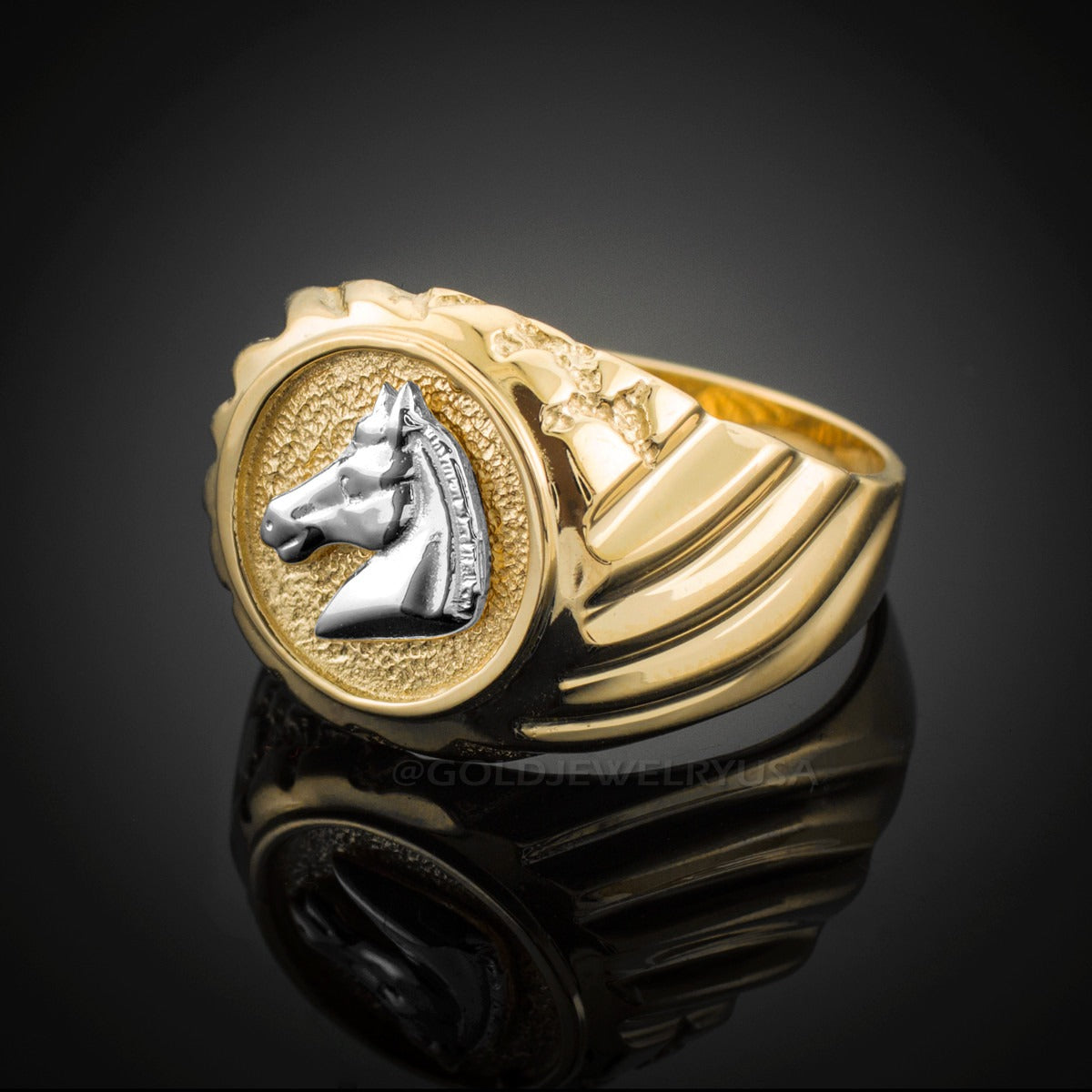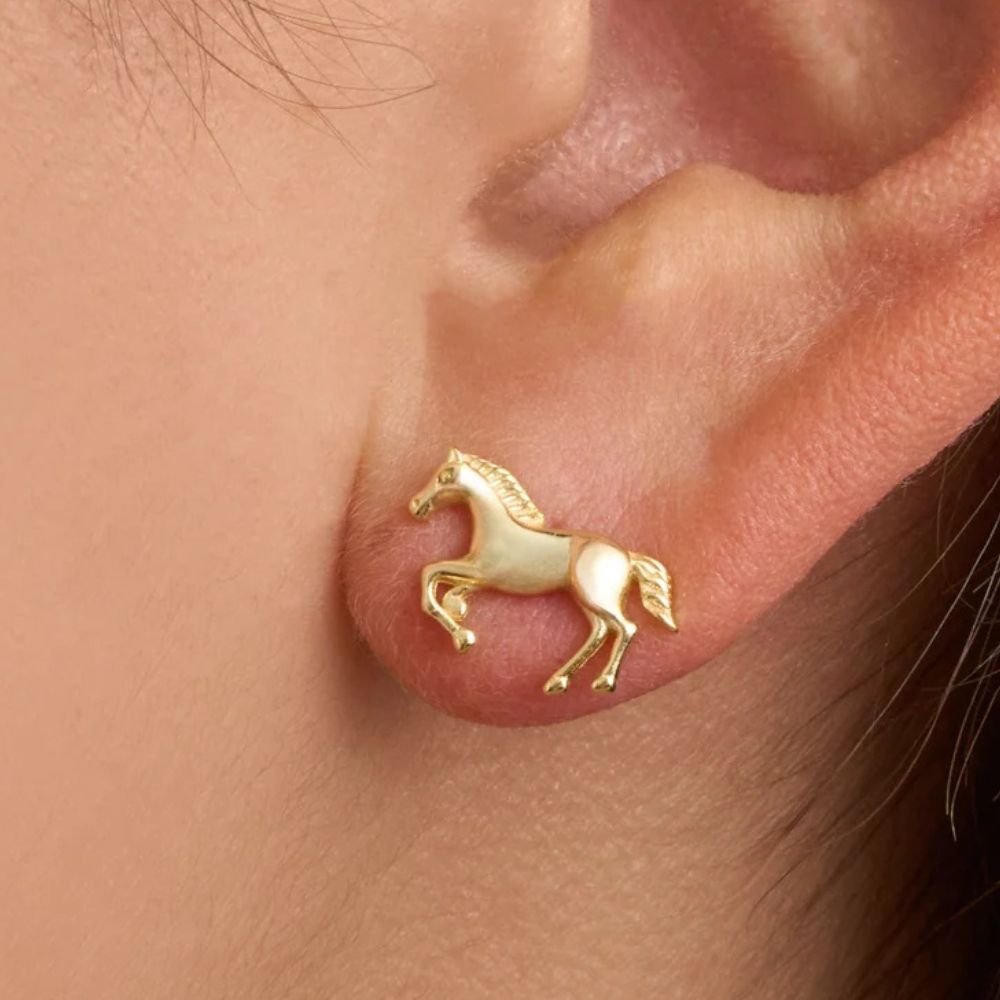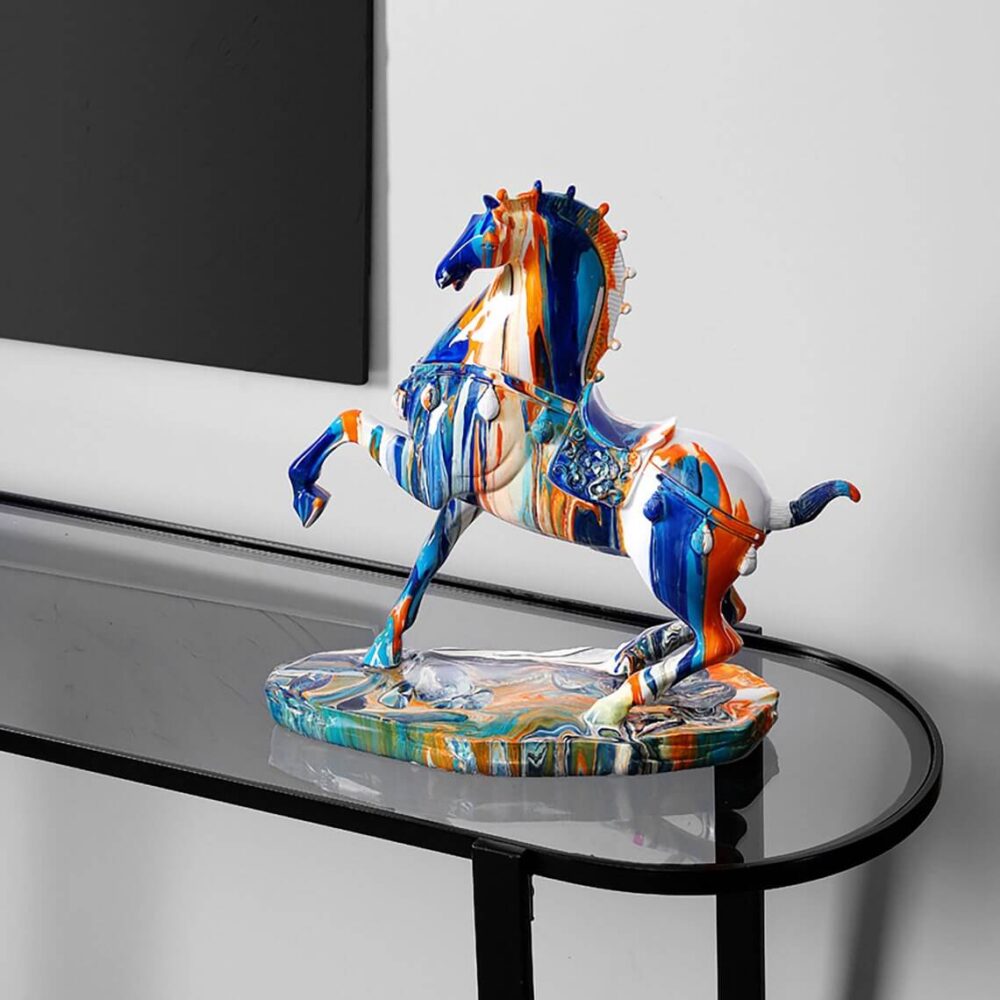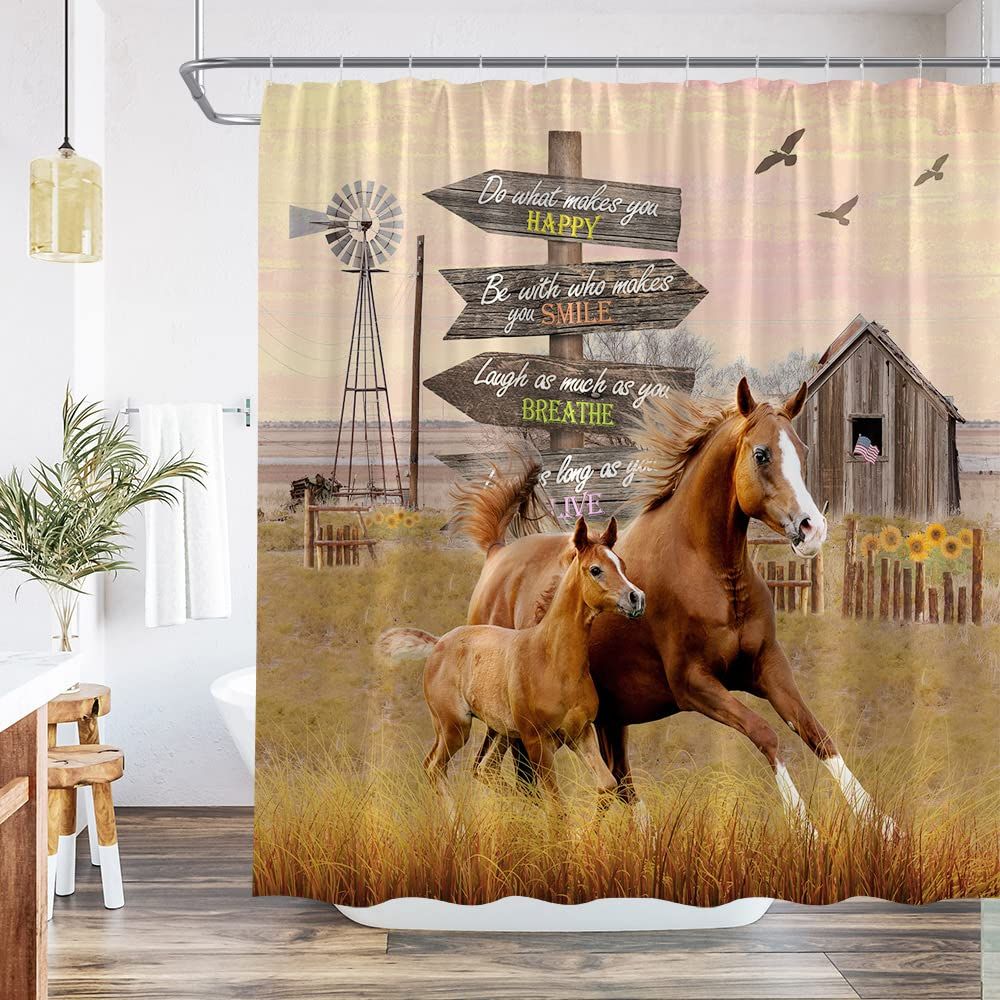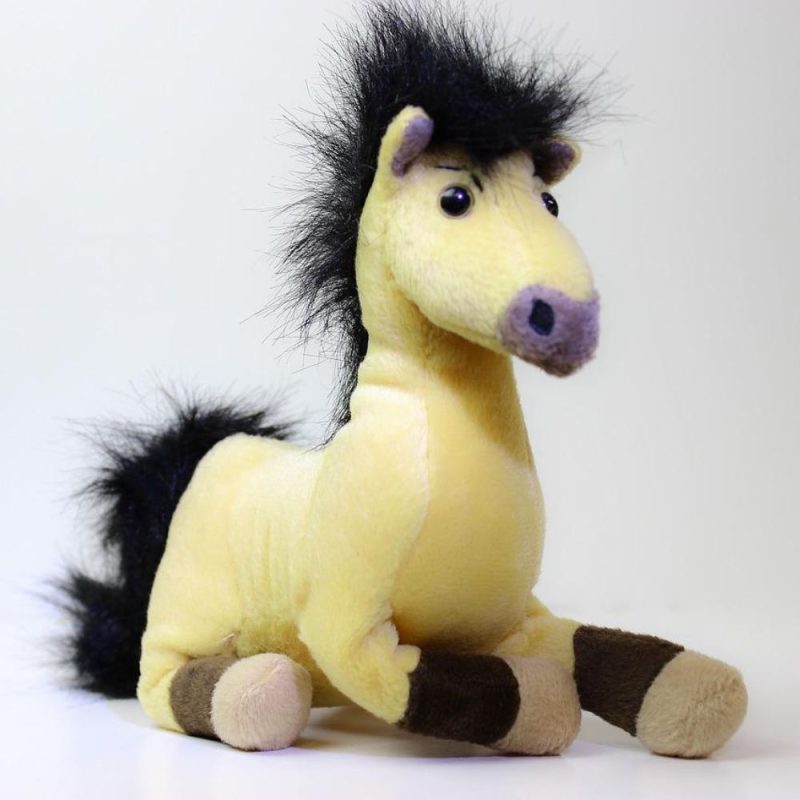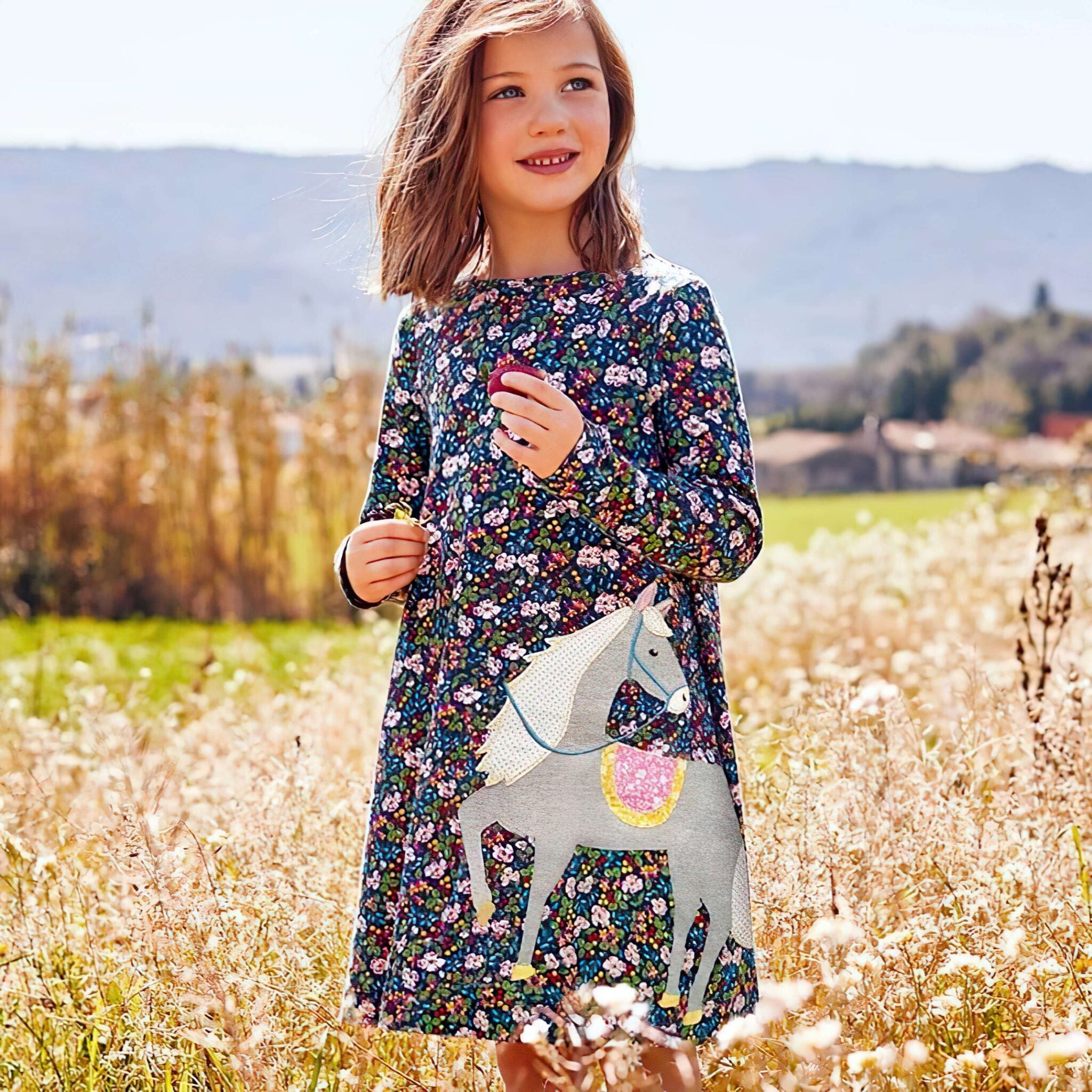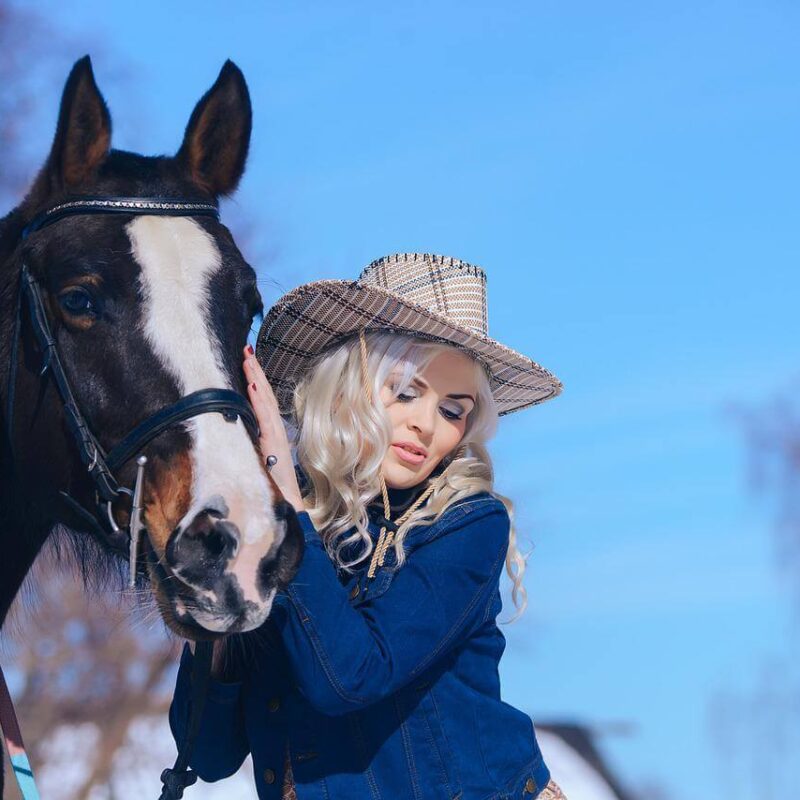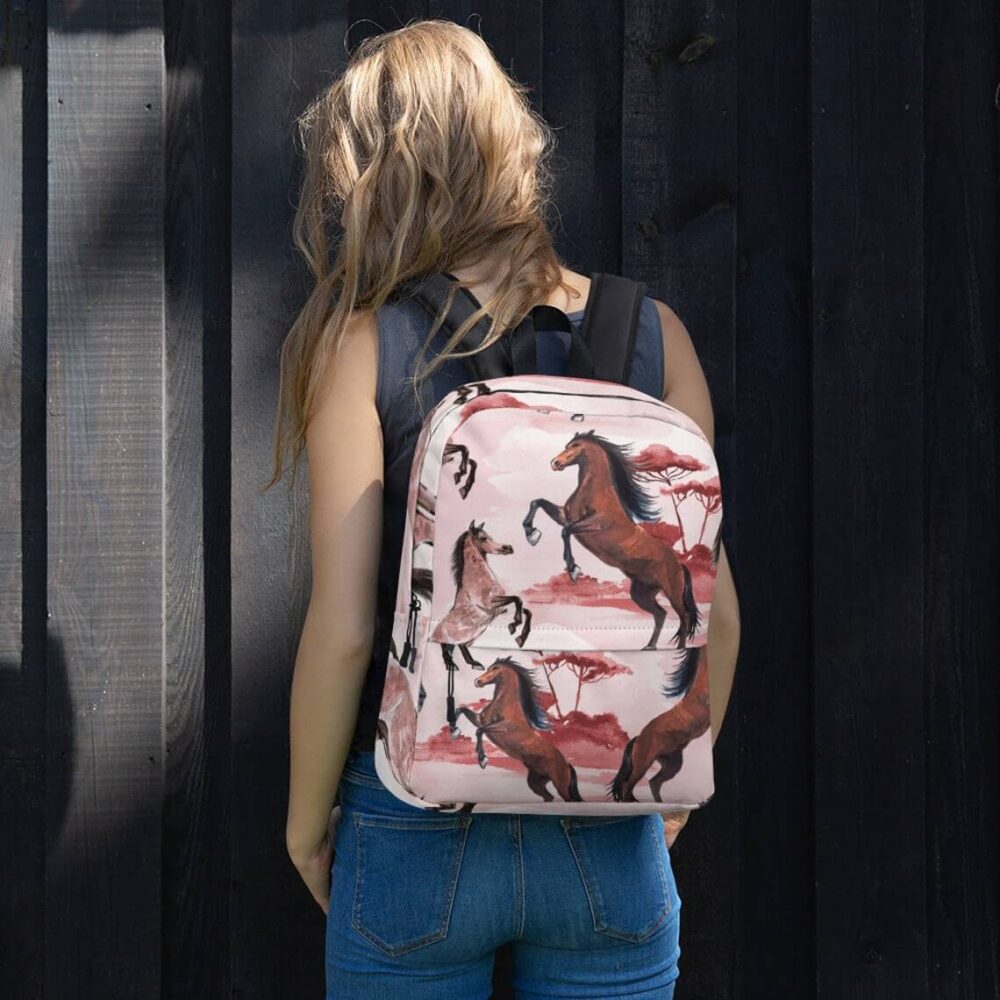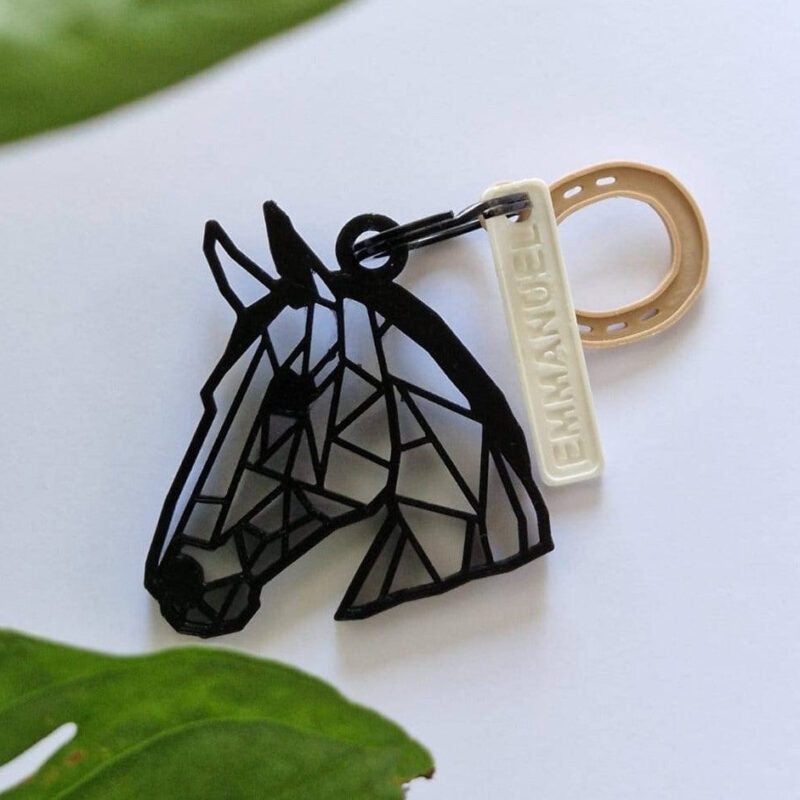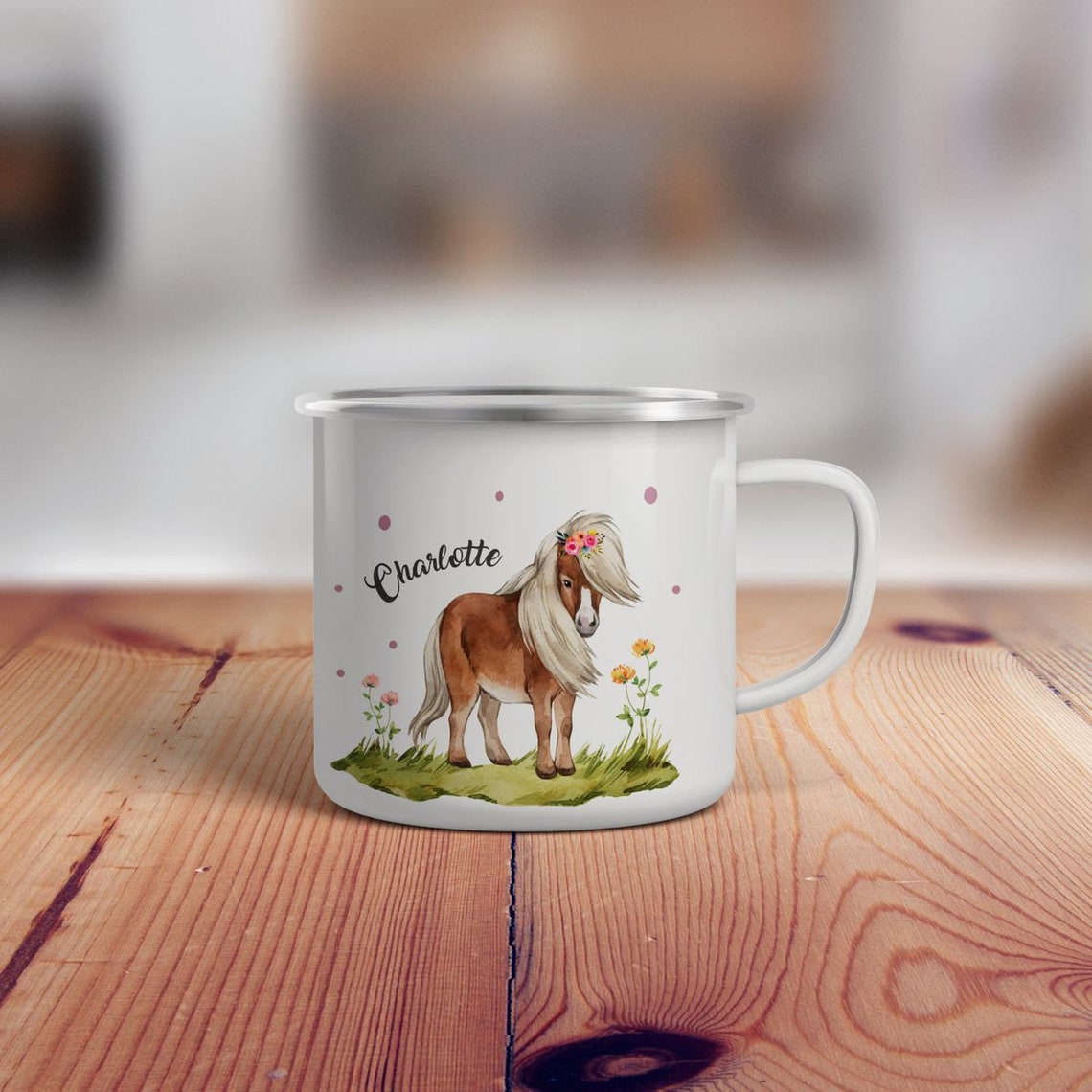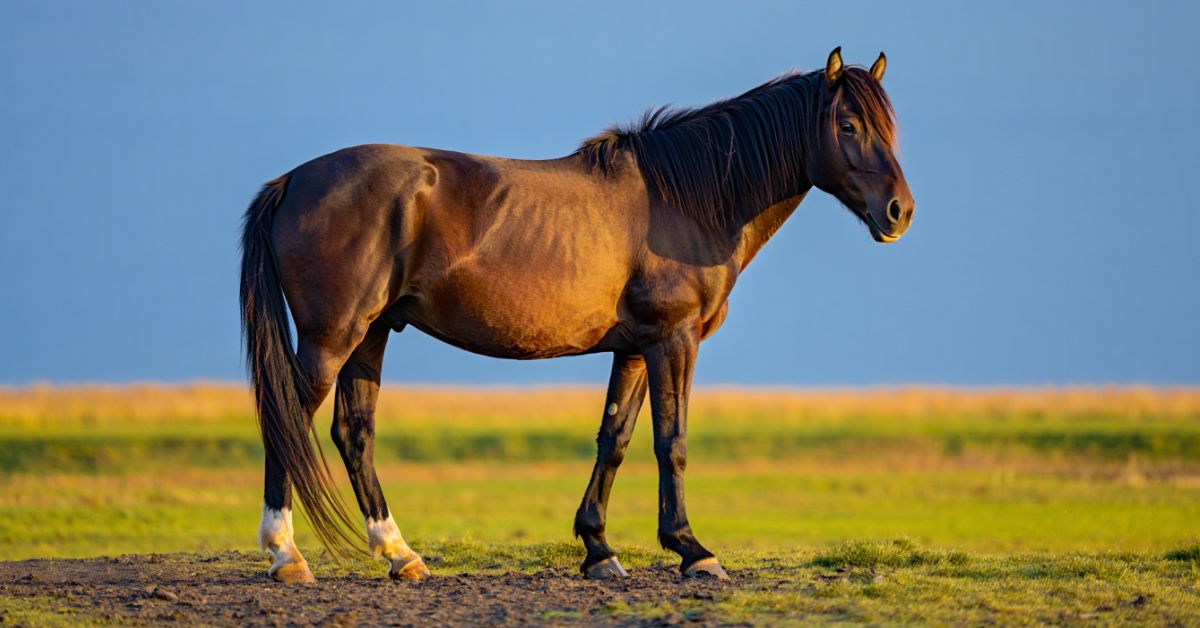
Why Don't Wild Horses Need Their Hooves Trimmed?
Have you ever wondered why wild horses roam freely across vast landscapes without ever seeing a farrier, while your domestic horse needs regular hoof appointments every 6-8 weeks? The answer lies in one of nature's most brilliant self-regulating systems: natural hoof wear.
In this comprehensive guide, you'll discover exactly how wild horse hoof care works, why feral horse hooves stay perfectly balanced without human intervention, and what lessons we can learn from the barefoot horse model to improve the health of our domestic companions. 🐎
The Secret Behind Self-Trimming Hooves
Wild horses possess what equine experts call a natural hoof maintenance system. Unlike their domestic counterparts confined to stables and soft pastures, mustang hooves are constantly shaped by their environment through three key mechanisms:
Constant locomotion is the foundation. Free-roaming horses travel between 15 to 30 miles daily searching for food and water. This continuous movement creates a perfect balance between hoof growth and wear balance. While domestic horses often stand idle for 20+ hours a day, wild horses are perpetually on the move, allowing their hooves to self-regulate naturally.
The terrain makes all the difference. Abrasive terrain like rocky mountainsides, desert hardpan, and gravelly riverbeds acts as nature's filing system. Each step across these varied ground surfaces gently wears down the hoof wall at precisely the rate it grows – approximately 6-10mm per month. This creates what farriers call a physiological hoof trim without any human intervention. ✨
Equine hoof anatomy evolved over millions of years to support this lifestyle. The hoof capsule integrity of wild horses features thicker hoof sole thickness, denser hoof walls, and superior hoof strength compared to most domestic breeds. This is the result of both natural selection and genetic selection – horses with weak hooves simply didn't survive to pass on their genes.
What Domestic Horses Are Missing
The contrast between wild and domestic horses reveals why we need farriers in the first place. Understanding the difference between wild and domestic horse hooves helps explain the challenges of domestic horse hoof care.
The Confinement Problem
Domestic horses live in what we call the "comfort trap." Soft bedding, manicured pastures, and limited turnout create an environment where hoof overgrowth becomes inevitable. Without the absence of confinement that wild horses enjoy, domestic hooves grow faster than they wear down.
The hoof environment adaptation mechanism simply can't function properly. Your horse's hooves are designed to respond to challenging terrain, but rubber mats and grass paddocks don't provide sufficient resistance. The result? Overgrown hooves that compromise hoof balance, alter the hoof breakover point, and can lead to serious conditions like laminitis.
Movement Matters More Than You Think 💡
Wild horses achieve what researchers call "constant locomotion" – they're never truly sedentary. This continuous movement doesn't just wear down hooves; it also promotes hoof circulation, strengthens the internal structures, and provides ongoing hoof conditioning.
Domestic horses, even those with generous turnout, rarely cover the same wild horse mileage. Studies show that the average pastured domestic horse moves only 3-5 miles daily – a fraction of what their wild cousins cover. This dramatic difference in activity level is perhaps the single biggest factor in why domestic horses require regular visits from the farrier.
The Role of Diet in Hoof Health
Here's something many horse owners don't realize: diet directly impacts hoof quality. Wild horses consume a natural diet for hooves that's radically different from typical domestic feeding programs.
Feral horses graze on sparse, fibrous vegetation – native grasses, browse, and scrub that's high in fiber and extremely low in sugars and starches. This low-sugar diet keeps insulin levels stable and inflammation minimal, reducing the risk of preventing laminitis and other metabolic hoof problems.
In contrast, domestic horses often receive rich hay, grain concentrates, and lush pasture grass – all of which can spike sugar and starch intake. These dietary factors can weaken hoof sole thickness, compromise hoof wall integrity, and create an internal environment where hooves grow faster but with poorer quality.
The wild horse's sparse diet also means slower overall growth rates, making it easier for natural wear to keep pace with growth. It's another piece of the puzzle in understanding natural hoof maintenance. 🐾
The Barefoot Movement: Learning From Wild Horses
The barefoot trimming movement in domestic horse care draws direct inspiration from wild horse hooves. Practitioners study mustang hooves to understand what a healthy, functional hoof should look like, then attempt to recreate those characteristics in domestic horses.
Key Principles of Barefoot Care
Barefoot trimming mimics the self-shaping hooves of wild horses by:
-
Encouraging natural hoof capsule integrity through appropriate trimming angles
-
Promoting tougher hoof sole thickness by allowing ground contact
-
Supporting proper hoof circulation through varied movement
-
Creating optimal hoof balance that follows wild horse templates
However, transitioning to barefoot isn't suitable for every domestic horse. Genetics, previous hoof care history, workload, and available terrain all play crucial roles. The goal isn't to make every domestic horse exactly like a mustang, but to understand the evolution of the horse hoof and apply those principles where appropriate.
Can Domestic Horses Go Barefoot?
Many can, but success depends on several factors. Horses with strong genetic selection for good hooves (like many Spanish breeds, Morgans, and draft crosses) often transition successfully. The key is providing adequate hoof conditioning through:
-
Maximum daily turnout time
-
Access to varied terrain when possible
-
Appropriate diet management
-
Gradual transition periods
-
Professional barefoot trimmer support
The hoof function without shoes movement has proven that with proper management, many domestic horses can thrive barefoot, enjoying improved hoof resiliency and natural biomechanics. ✨
Wild Horses vs. Domestic: The Reality Check
Let's be honest: we can't fully replicate wild horse conditions for our domestic partners, and that's okay. The natural environment impact on wild horses includes both benefits and harsh realities.
Wild horses experience:
-
Natural selection that eliminates horses with weak hooves (harsh but effective)
-
Constant exposure to weather extremes
-
Periods of nutritional scarcity
-
No veterinary intervention for injuries or illness
-
Shorter average lifespans than domestic horses
Our domestic horses live longer, healthier lives with our care – including regular farrier visits. The goal isn't to romanticize wild horse life, but to extract the valuable lessons about natural hoof wear and apply them intelligently to domestic care.
Practical Applications for Your Horse
You can incorporate wild horse principles even if your horse sees a farrier:
-
Maximize movement – provide as much turnout as safely possible
-
Vary terrain – create track systems or paddock paradise setups with different surfaces
-
Optimize diet – reduce sugars and increase appropriate fiber sources
-
Consider boots – hoof boots during riding can allow barefoot turnout
-
Work with your farrier – discuss natural balance trimming approaches
The Science Behind Natural Hoof Maintenance
Recent research into wild horse movement patterns has revealed fascinating details about how natural hoof maintenance actually works at a cellular level.
The continuous pressure and release cycle created by constant walking stimulates hoof circulation, bringing nutrients to the sensitive laminae and promoting healthy growth. The mechanical stress also signals the hoof to grow denser, stronger horn material – exactly what's needed for the terrain.
Studies of mustang hooves show they typically have:
-
2-3mm thicker soles than average domestic horses
-
Denser hoof wall tubules
-
More pronounced natural concavity
-
Better defined water lines
-
Superior shock absorption properties
This isn't magic – it's simply hoof environment adaptation in action. The hoof is a living, responsive structure that adapts to the demands placed upon it. Give it challenging terrain and constant movement, and it builds accordingly. Provide only soft surfaces and limited activity, and it responds with weaker, faster-growing structures that require regular maintenance. 💡
Genetic Factors You Can't Ignore
While environment plays the starring role, genetic selection matters too. Wild horse populations have undergone intense natural selection for thousands of years. Horses with poor hooves didn't reproduce, gradually improving the overall hoof quality of the population.
Domestic breeding has sometimes inadvertently selected against strong hooves by prioritizing other traits like speed, size, or color. Some breeds have notably better barefoot hoof genetics than others:
Strong hoof genetics:
-
Spanish Mustangs and other feral-derived breeds
-
Icelandic horses
-
Most pony breeds
-
Traditional draft breeds
-
Arabian horses
More challenging genetics:
-
Some Thoroughbred lines
-
Certain Quarter Horse bloodlines
-
Horses bred exclusively on soft surfaces
Understanding your horse's genetic background helps set realistic expectations about their hoof strength potential and appropriate management strategies.
Common Myths About Wild Horse Hooves
Let's bust some misconceptions about wild horse hoof care:
Myth #1: "Wild horses have perfect hooves." Reality: Wild horses have functional hooves for their environment. They can still develop problems, but natural selection removes affected individuals from the gene pool.
Myth #2: "Any horse can go barefoot like a mustang." Reality: While many horses can go barefoot with proper preparation, genetics, previous care, and intended use all matter. A competitive jumper has different needs than a light trail horse.
Myth #3: "Wild horses never have hoof problems." Reality: Wild horses can suffer from abscesses, chips, cracks, and other issues – they just lack veterinary intervention. Many wild horses have imperfect hooves but manage to survive anyway.
Myth #4: "Shoes are always bad for horses." Reality: Shoes are a tool. For horses working on hard surfaces, competing at high levels, or with certain conformational issues, shoes can be beneficial. The key is appropriate application.
FAQ: Wild Horse Hoof Care
How far do wild horses travel daily?
Wild horses typically cover 15-30 miles per day depending on terrain, water availability, and season. This constant movement is the primary mechanism behind their natural hoof wear system, allowing growth and wear to stay perfectly balanced without human intervention.
Can I replicate wild horse conditions for my domestic horse?
You can incorporate key principles – maximized turnout, varied terrain, appropriate diet, and increased movement – but fully replicating wild conditions isn't realistic or necessary. Work with your farrier to find the right balance of natural hoof maintenance principles and practical domestic care.
Why do some domestic horses have better hooves than others?
Genetic selection plays a significant role. Horses bred from lines with historically minimal hoof care (like many pony breeds and feral-derived horses) often have stronger hoof genetics. Environment, diet, and movement during development also heavily influence adult hoof strength.
What is the barefoot trimming method?
Barefoot trimming is a farrier approach that mimics the natural wear patterns observed in healthy mustang hooves. Instead of shoeing, the farrier trims to encourage natural hoof balance, proper angles, and functional geometry – essentially creating what nature would do on abrasive terrain.
Do wild horses ever need hoof care?
In their natural environment, no. The self-trimming mechanism maintains their hooves automatically. However, wild horses captured for adoption or sanctuary often need immediate farrier attention because domestic environments lack the varied ground surfaces that kept their hooves naturally maintained.
Conclusion: Nature's Wisdom Applied to Modern Horse Care
The question "why don't wild horses need their hooves trimmed?" reveals a sophisticated natural system built on constant locomotion, abrasive terrain, and natural selection. While we can't – and shouldn't – fully replicate wild conditions for our beloved domestic horses, understanding the principles behind natural hoof maintenance makes us better horse owners.
The key takeaways? Movement matters most. Diet deeply impacts hoof quality. Varied terrain strengthens hooves. And genetics set the foundation for everything else.
Your domestic horse may always need a farrier, but by incorporating principles from the wild horse hoof care model – more movement, better diet, varied surfaces – you can improve their hoof health and potentially extend the time between farrier visits. It's about working with nature, not against it. 🐎✨
Take Action Today
Share your experience: What changes have you made to improve your horse's hoof health? Have you tried barefoot approaches? Drop your insights in the comments below – our community learns from each other! 👇
Explore deeper: Ready to transform your horse care knowledge? Check out our comprehensive guide on natural horse keeping and discover how track systems and paddock paradise designs can revolutionize your horse's wellbeing.
Stay connected: Don't miss our expert tips on equine health, natural horsemanship, and the latest in barefoot hoof care. Subscribe to our newsletter and join thousands of passionate horse lovers receiving actionable insights directly in their inbox every week!
At Dream Horse, we celebrate the timeless wisdom of nature while embracing modern equine care. Because understanding how horses thrive naturally makes us better partners to the horses we love. 🐴💚
